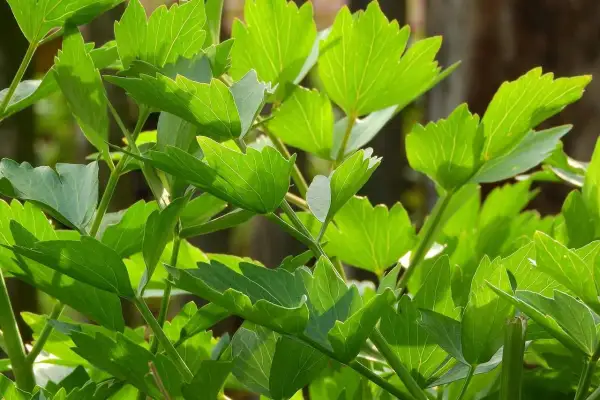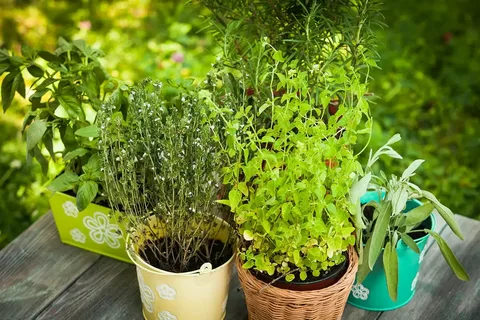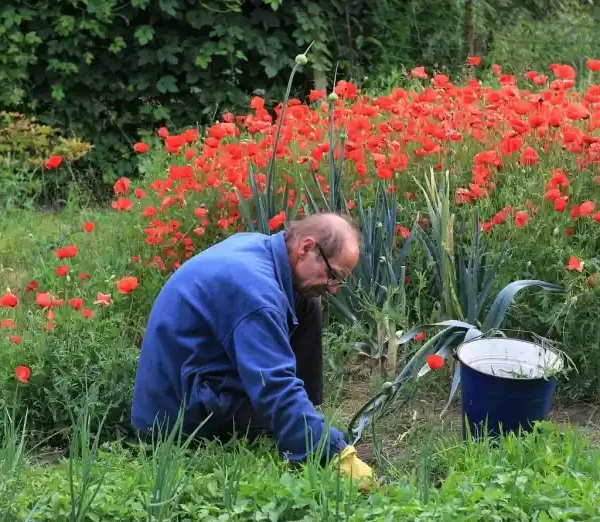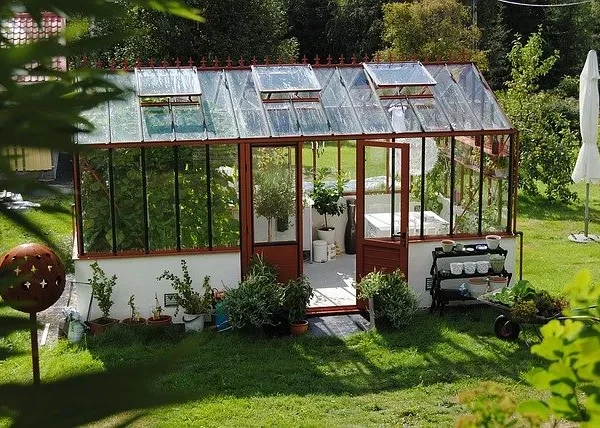Top 20 Perennial Herbs to Grow
Lavender (Lavandula angustifolia)
- Description: Lavender is a fragrant herb known for its purple flowers and calming properties. It is often used in aromatherapy and culinary dishes.
- Growing Tips: Prefers well-drained soil and full sunlight. Trim regularly to promote bushier growth.
- Reference: Royal Horticultural Society
Mint (Mentha spp.)
- Description: Mint is a versatile herb used in cooking, tea, and for its medicinal properties. It has a refreshing flavor and aroma.
- Growing Tips: Thrives in moist, well-drained soil and partial to full sunlight. Be cautious as it can be invasive.
- Reference: National Center for Complementary and Integrative Health
Thyme (Thymus vulgaris)
- Description: Thyme is a hardy herb with a robust flavor, often used in savory dishes. It also has medicinal uses.
- Growing Tips: Prefers well-drained soil and full sun. Avoid overwatering.
- Reference: USDA Plant Database
Sage (Salvia officinalis)
- Description: Sage is known for its strong flavor and is often used in stuffing and other savory dishes. It also has medicinal properties.
- Growing Tips: Thrives in well-drained soil and full sunlight. Cut back after flowering to maintain shape.
- Reference: American Horticultural Society
Rosemary (Rosmarinus officinalis)
- Description: Rosemary is a fragrant herb used in cooking and for its potential health benefits. It has needle-like leaves and a strong flavor.
- Growing Tips: Prefers well-drained soil and full sun. Avoid heavy, wet soils.
- Reference: University of California Agriculture and Natural Resources
Chives (Allium schoenoprasum)
- Description: Chives have a mild onion flavor and are used in a variety of dishes. They are also known for their edible purple flowers.
- Growing Tips: Grow in well-drained soil with full to partial sunlight. Harvest regularly to encourage new growth.
- Reference: Gardeners’ World
Oregano (Origanum vulgare)
- Description: Oregano is a robust herb used in Italian and Mediterranean cuisine. It also has medicinal properties.
- Growing Tips: Requires well-drained soil and full sunlight. Prune regularly to prevent legginess.
- Reference: Herbal Academy
Tarragon (Artemisia dracunculus)
- Description: Tarragon has a distinctive flavor similar to anise and is used in French cuisine. It also has potential digestive benefits.
- Growing Tips: Prefers well-drained soil and full sun. Protect from extreme winter conditions.
- Reference: University of Minnesota Extension
Lemon Balm (Melissa officinalis)
- Description: Lemon balm has a lemony flavor and is often used in teas and as a culinary herb. It also has calming properties.
- Growing Tips: Grows well in moist, well-drained soil with partial sunlight. Regular pruning helps control its spread.
- Reference: The Herb Society of America
Lovage (Levisticum officinale)
- Description: Lovage is known for its celery-like flavor and is used in soups and stews. It also has medicinal uses.
- Growing Tips: Thrives in well-drained soil and full sunlight. Protect from extreme heat and cold.
- Reference: National Gardening Association
Catnip (Nepeta cataria)
- Description: Catnip is known for its effects on cats and is also used in herbal teas. It has a minty flavor and aroma.
- Growing Tips: Prefers well-drained soil and full sun. Regular pruning helps maintain vigor.
- Reference: Botanical Society of America
Echinacea (Echinacea purpurea)
- Description: Echinacea is celebrated for its immune-boosting properties and is often used in herbal remedies. It has striking purple flowers.
- Growing Tips: Requires well-drained soil and full sun. Deadhead spent flowers to encourage more blooms.
- Reference: National Institute of Health
Marjoram (Origanum majorana)
- Description: Marjoram is similar to oregano but has a milder flavor. It is used in cooking and has some medicinal uses.
- Growing Tips: Prefers well-drained soil and full sun. Protect from frost.
- Reference: Penn State Extension
Winter Savory (Satureja montana)
- Description: Winter savory is a hardy herb with a peppery flavor, often used in stews and beans. It has anti-inflammatory properties.
- Growing Tips: Grows well in well-drained soil and full sun. Prune back after flowering.
- Reference: Ohio State University Extension.
Bee Balm (Monarda didyma)
- Description: Bee balm has aromatic leaves and is used in teas and culinary dishes. It also attracts pollinators like bees and butterflies.
- Growing Tips: Prefers moist, well-drained soil and partial to full sun. Divide plants every few years to maintain health.
- Reference: Missouri Botanical Garden
Parsley (Petroselinum crispum)
- Description: Parsley is a versatile herb used as a garnish and in cooking. It is rich in vitamins and minerals.
- Growing Tips: Grows well in well-drained soil with full to partial sunlight. Harvest regularly to encourage growth.
- Reference: University of Illinois Extension
Fennel (Foeniculum vulgare)
- Description: Fennel has a licorice-like flavor and is used in cooking and herbal remedies. Its fronds and seeds are both edible.
- Growing Tips: Prefers well-drained soil and full sunlight. Space plants adequately to allow for bulb development.
- Reference: North Carolina State University Extension
Sorrel (Rumex acetosa)
- Description: Sorrel has a tangy flavor and is used in soups, salads, and sauces. It has high vitamin C content.
- Growing Tips: Grows well in moist, well-drained soil with partial to full sun. Can become invasive if not managed.
- Reference: University of Wisconsin-Madison Extension
Angelica (Angelica archangelica)
- Description: Angelica is used in traditional medicine and as a flavoring in liqueurs. It has a distinctive aroma and flavor.
- Growing Tips: Prefers rich, moist soil and partial shade. Protect from extreme heat and cold.
- Reference: Royal Horticultural Society
Wormwood (Artemisia absinthium)
- Description: Wormwood is known for its bitter flavor and is used in herbal remedies and flavoring for absinthe. It has medicinal properties.
- Growing Tips: Thrives in well-drained soil and full sun. Prune regularly to maintain its shape and health.
- Reference: University of California Agriculture and Natural Resources
Conclusion
Incorporating perennial herbs into your garden can offer numerous benefits, including sustainability and long-term productivity. These 20 herbs not only provide culinary and medicinal advantages but also enhance your garden’s biodiversity. By following the growing tips and best practices mentioned, you can enjoy a thriving perennial herb garden that will return year after year.
What are perennial herbs?
Perennial herbs are plants that live for more than two years and regrow each season from their root systems. Unlike annuals, which need to be replanted every year, perennials continue to thrive year after year.
Why should I grow perennial herbs in my garden?
Growing perennial herbs is advantageous because they offer a sustainable and cost-effective solution. They require less replanting and maintenance compared to annual herbs, providing consistent yields of herbs for culinary, medicinal, or decorative use.
Which perennial herbs are best for culinary purposes?
Some of the best perennial herbs for culinary use include lavender, mint, rosemary, thyme, sage, and oregano. These herbs are versatile and can enhance a variety of dishes with their unique flavors.
Can perennial herbs be grown in containers?
Yes, many perennial herbs can be successfully grown in containers. Ensure that the container has good drainage and provides enough space for the roots to expand. Herbs like mint, chives, and thyme are well-suited for container gardening.
How do I care for perennial herbs during the winter?
Winter care for perennial herbs typically involves protecting them from extreme cold and frost. Some herbs, like rosemary, may require additional insulation or indoor placement, while others, like sage and thyme, can generally withstand winter conditions if mulched properly.
Are perennial herbs low maintenance?
Perennial herbs generally require less maintenance than annuals. They often need occasional pruning, watering, and weeding, but their ability to regrow each year reduces the need for frequent replanting.
Which perennial herbs attract pollinators?
Herbs like bee balm, lavender, and mint are known to attract pollinators such as bees, butterflies, and hummingbirds. These herbs can help enhance biodiversity in your garden by supporting local wildlife.
How can I prevent perennial herbs from becoming invasive?
To prevent perennial herbs from becoming invasive, regularly monitor their growth and use containers if necessary. Pruning and proper spacing can also help manage their spread and ensure they don’t outcompete other plants in your garden.
Can I grow perennial herbs indoors?
Yes, many perennial herbs can be grown indoors as long as they receive adequate light and are planted in well-drained soil. Herbs such as chives, parsley, and mint can thrive indoors with the right conditions.
What are the benefits of growing perennial herbs over annual herbs?
Perennial herbs offer the benefits of longevity, reduced replanting effort, and year-round availability. They contribute to a more sustainable garden and provide ongoing supplies of herbs without the need for annual replacement.
- Explore THC Infused Drinks in New York - May 9, 2025
- The Latest in THC Seltzers Across Texas - May 9, 2025
- Top THC Infused Drinks Available in Oklahoma - May 9, 2025





